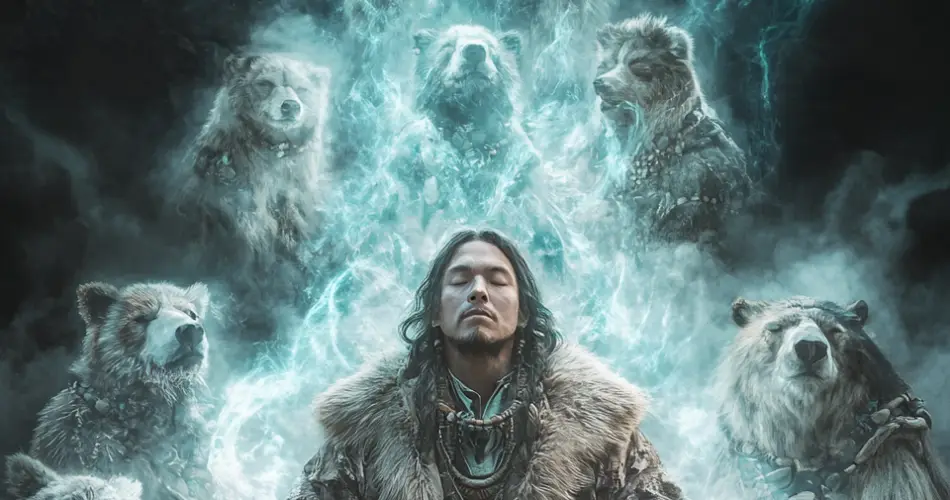Introduction
The Inuit people are an ancient group indigenous to the Arctic and sub-Arctic regions of Canada, Greenland, and Alaska. They are descendants of the Thule culture that migrated into these regions 3,000 years ago.
The Inuit developed a semi-nomadic way of life uniquely suited to the harsh conditions of the Arctic, where farming was impossible. They depended almost entirely on hunting and fishing to survive.
The significance of myths to the Inuit
The religious and mythological ideas that developed among the Inuit paint a unique picture of their lifestyle. These myths helped explain the natural world and teach skills critical for survival in the harsh environment.
Role of Sprits in Inuit Mythology.
Inuit mythology is deeply rooted in animism. The universe is perceived as an interconnected web of spiritual forces, where everything is imbued with its own spiritual essence or Inua. The Inuit believed that the world is not simply made up of lifeless matter but is animated by invisible powers that uphold and govern the functioning of all things.
Each element of nature—a stone, an animal, the air, or even intangible aspects like strength or appetite—possesses its own Inua, which can be understood as the spirit, “owner,” or “indweller” of that entity. These spirits are deeply intertwined with the physical forms they inhabit, although they are also distinct and separable from them.
Even death is viewed through this lens. The soul is seen as the Inua of the lifeless body, and it lingers as the Inua of the grave.
Shamans in Inuit Mythology (Angakoks)
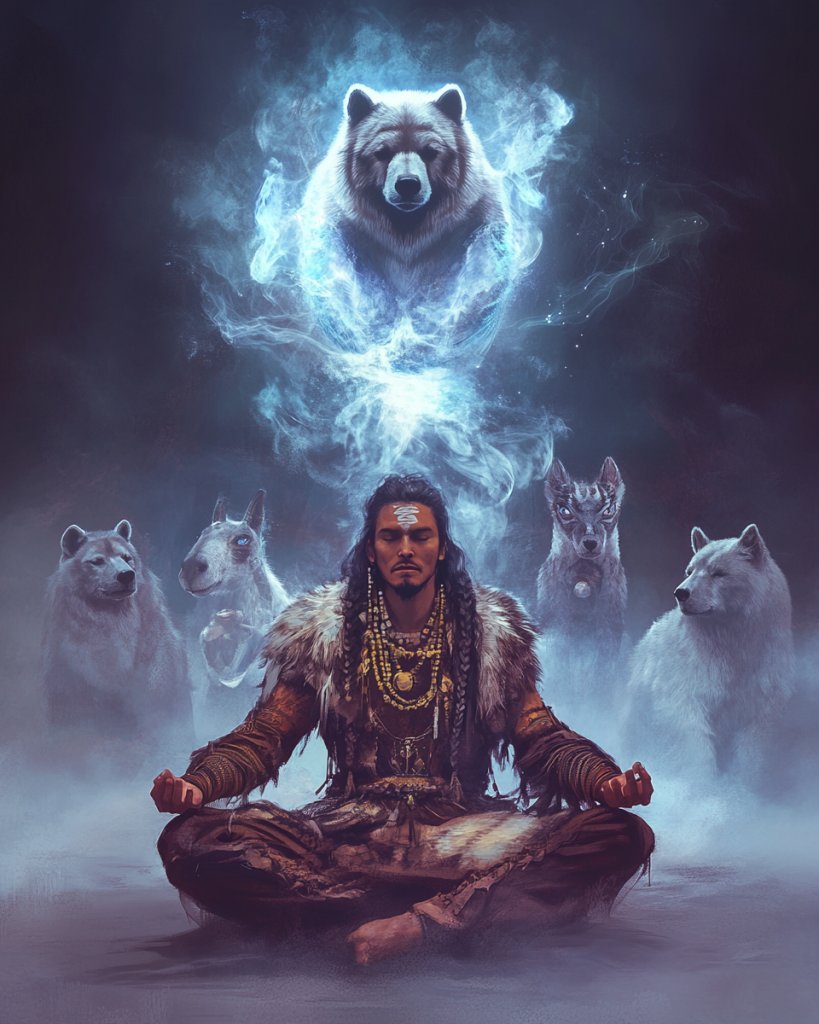
According to Inuit Myths, the spirits that reside in objects and natural elements may become the helpers or guardians of men. These guardian spirits are known as Tornait. Especially powerful Tornait are those that come from Stones and Polar bears.
Some people are believed to be blessed with many powerful Tornait spirits as guardians; these people become Shamans or Angakok. They are endowed with magical and healing powers and are important intermediaries between the spirits and the human community.
The concept of Sila
Another important part of Inuit Mythology is the concept of Sila, a life-giving element believed to be the essence of souls or spirits. Sila is the closest thing in Inuit mythology to a supreme force, as it is believed that life can not exist without this phenomenon.
Sili in Inuit mythology can be compared to Qi in Chinese mythology or the Paramatman in Hinduism.
Inuit Raven Creation story
In Inuit culture, it is believed that a primordial Raven created the world. Initially, the world was in darkness and devoid of life. The raven brought light to the world and created the land.
The Raven also filled the earth with all kinds of plants. After some time, men started to drop from Pea Pods as fully grown adults. The myths are unclear on whether men were an intentional creation of the Raven, but it is generally accepted that he loved them.
To support this first human community, the Raven created different types of animals from clay and spread them all over the world so that they would not be consumed at once.
Inuit Sun and Moon Creation Story
In Inuit mythology, the Sun and Moon were once mortal siblings that lived in a house without light. One night, the siblings unknowingly slept together.
Upon discovering the truth about who she slept with, the sister, filled with shame, tore off her breasts and threw them to her brother, saying, “If my body pleases you, take these too.” She then fled, with her brother pursuing her, both carrying torches.
As they ran, they ascended into the sky. The sister’s bright torch became the Sun, while the brother’s dim ember turned into the Moon.
Life, Death and the Underworld
The Inuit did not view Iife and death as definitive beginnings or ends but as episodes in an ongoing cycle. They believed that the soul continues its existence after death, in the realms that lie beyond the human world.
Afterlife In Inuit Mythology.
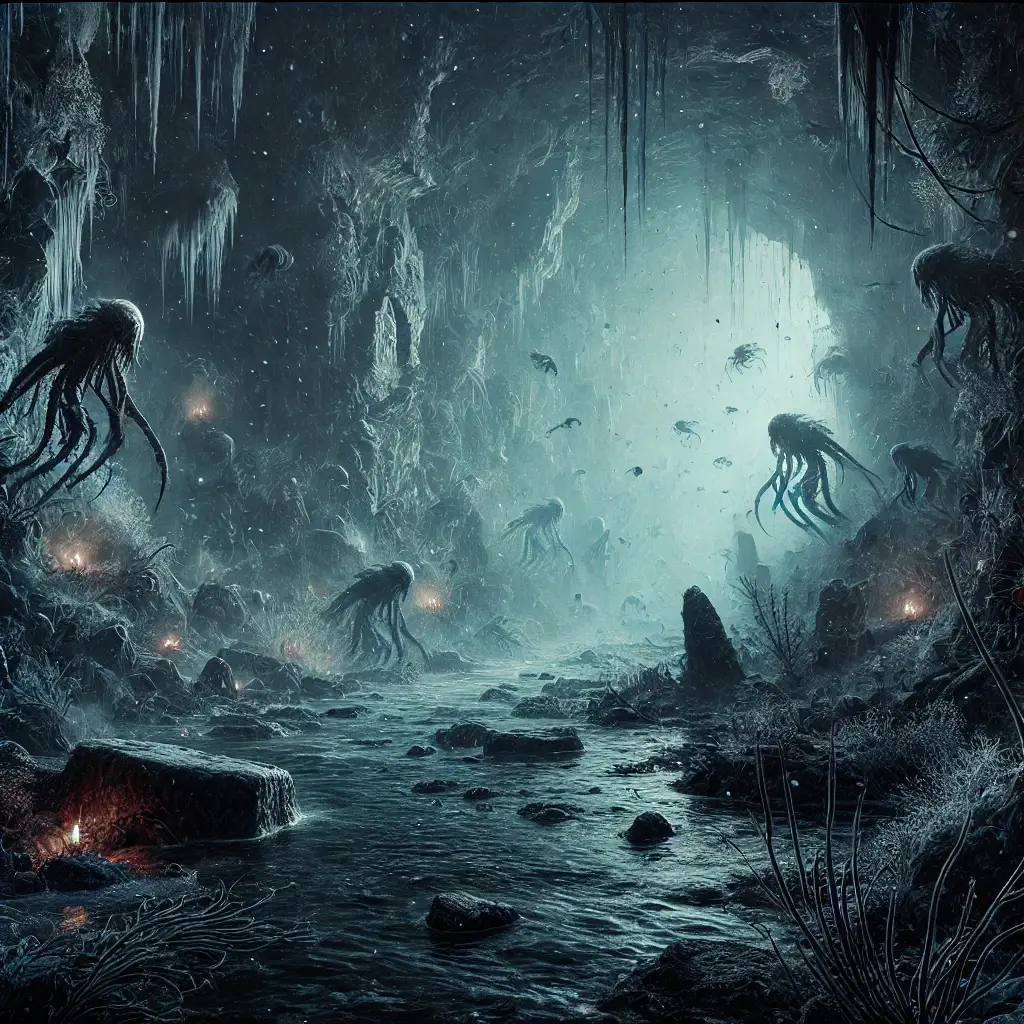
The underworld, or lower realm, is described as a cold, dark, and stormy place under the sea. This is where those who lived unhappy or wicked lives are sent.
On the other hand, the upper world is depicted as a land of plenty, filled with warmth, song, and joy. This realm is reserved for those who lived good and happy lives, as well as for those who died by accident, violence or during childbirth.
However, not all Inuit traditions agree on the nature of these afterlife realms. In some versions of the myths, the lower world is considered the happier, more pleasant place, while the upper world is described as cold and desolate.
A third perspective suggests that the soul experiences joy in either realm, indicating that the afterlife is more about transition than punishment or reward.
Death and Rebirth
Central to Inuit belief is the idea that the body is merely an instrument for the soul. The soul’s power is thought to grow stronger after death. The dead are also believed to retain certain abilities and influences over the living.
Rebirth is another major theme in Inuit mythology. It is believed that souls can be reincarnated in human or animal form. Some souls are said to journey through various stages of animal life, from land creatures to sea beasts, before returning to human form. However, most human souls are believed to be reborn as humans again.
Interestingly, some Inuit tribes hold a variant belief that the soul of the deceased relative enters the body of the newborn child, acting as a protector and even speaking through the child until it reaches an age of understanding.
Major Inuit Deities and Figures
Deities in Inuit mythology are also believed to be spirits. However, these spirits exist at an elevated level and are so powerful that they cannot be controlled by the Shamans; they exist on their own and can only be influenced through rituals and sacrifices.
Some of the deities in Inuit Mythology are listed below;
Sedna (Mother of the Sea)
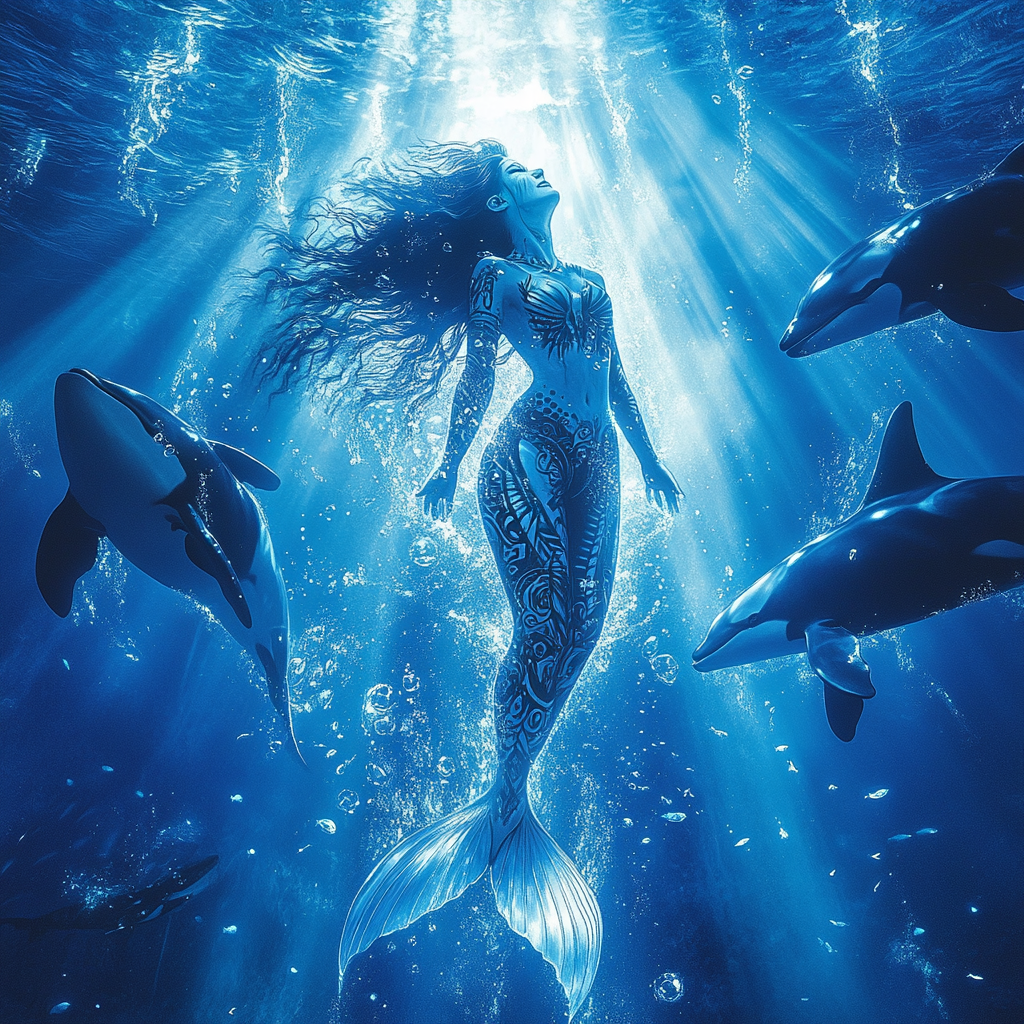
Sedna is the Inuit goddess of the sea and everything within it. The seals, whales, and other marine animals that the Inuit depend on are believed to come from her.
When the Inuit hunters are unable to catch any game for long periods, the shaman is required to visit Sedna in the spirit world and appeals to her to send more game.
Since marine animals form a major part of the Inuit diet, the goddess is held in high regard among the Inuit.
Nanook (Polar Bear Spirit)
Nanook is another significant deity in Inuit mythology. Although the details of the myths may vary from tribe to tribe, Nanook is generally seen as the deity or spirit that controlled the polar bears, which the Inuit hunted for furs and meat.
He determines whether a hunter will be successful in his hunt for polar bears. Inuit hunters pay respect to this ancient deity by offering the hunting tools used in a successful hunt to the spirit of the polar bear.
Torngarsuk
Torngarsuk is another important deity in Inuit mythology. He is known as the Master of the spirits. It is believed that the Angakoks or Shamans get their powers from this deity.
Also called the great Tornak or the ruler of the Tornait. Torngarsuk is also believed to have powers over the seals and whales. He also guides the souls of the dead to the underworld.
Anguta (Father of Sedna)
Anguta is the father of Sedna. Although he is not as important as his daughter in Inuit culture, he is still held in high regard for his role in creating the marine organisms that the Inuit depend on.
According to the myths, when it was time for Sedna to marry, she refused to choose any of the hunters from her tribe.
One day, a successful hunter from another tribe came around, and Anguta, knowing his daughter would refuse him too, drugged her and gave her to the man.
When Sedna woke up, she tried to hold on to her father’s Kayak, but her fingers froze and broke off. She sank to the bottom of the sea where she now lives. Her frozen fingers fell into the water and became the seals and whales.
Mythological Creatures and Spirits In Inuit Mythology
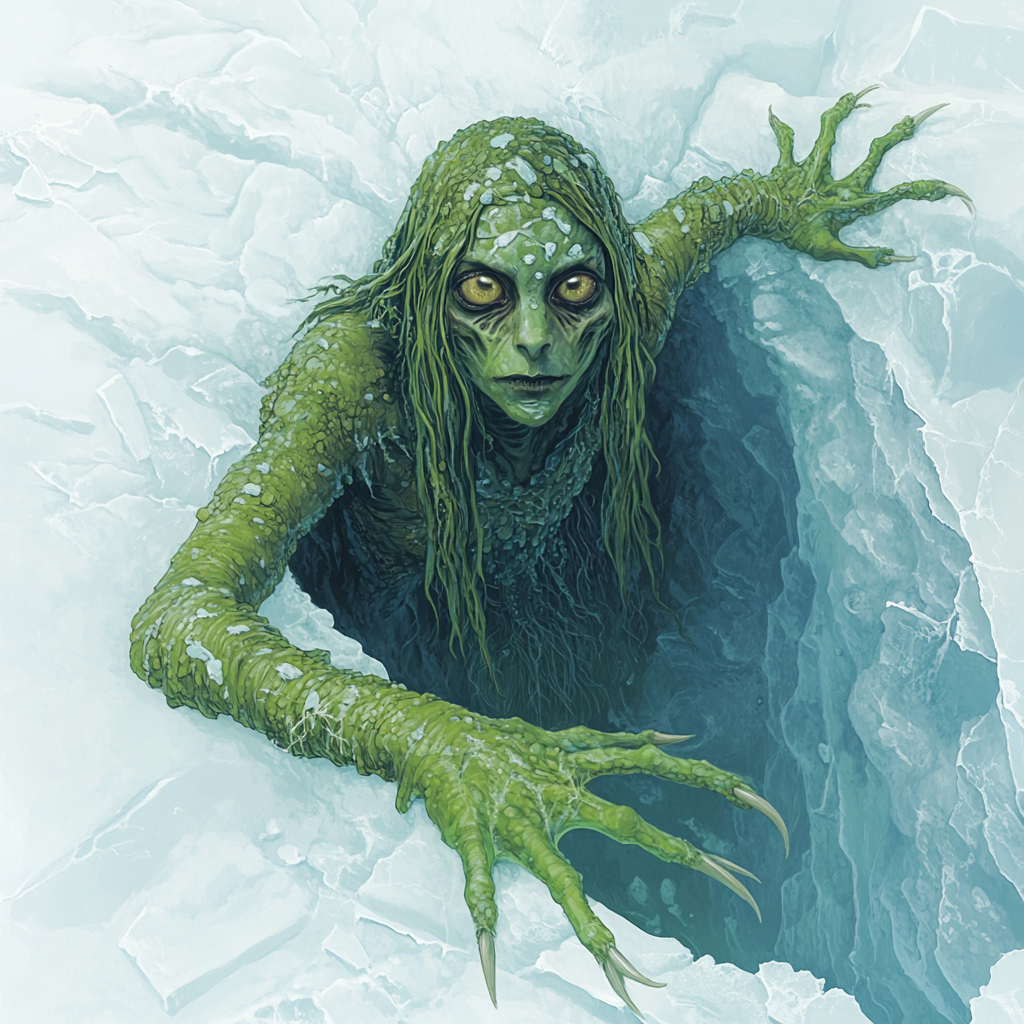
Inuit Mythology has a diverse array of mythological creatures and spirits. Some of these creatures are inspired by bizarre extinct animals that the ancient Inuit encountered, while others are purely born from the imagination.
No matter their origin, mythological creatures in Inuit Mythology are used to warn people of the dangers of carelessness in this harsh environment.
An example is the Qalupalik, a humanoid shapeshifting sea creature said to live along the Arctic shoreline and kidnap children who wander too close to the water.
Other examples include;
- Amarok: A giant wolf that hunts those who stray away from the group.
- Adlet: Half-dog, Half-human cannibalistic hybrid species that hunt inland territories.
- The Mahaha: A bony, agile monster that tickles people to death.
